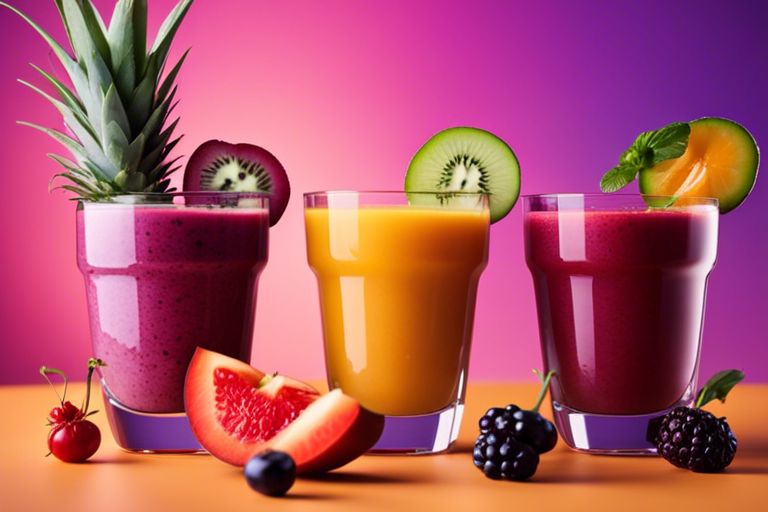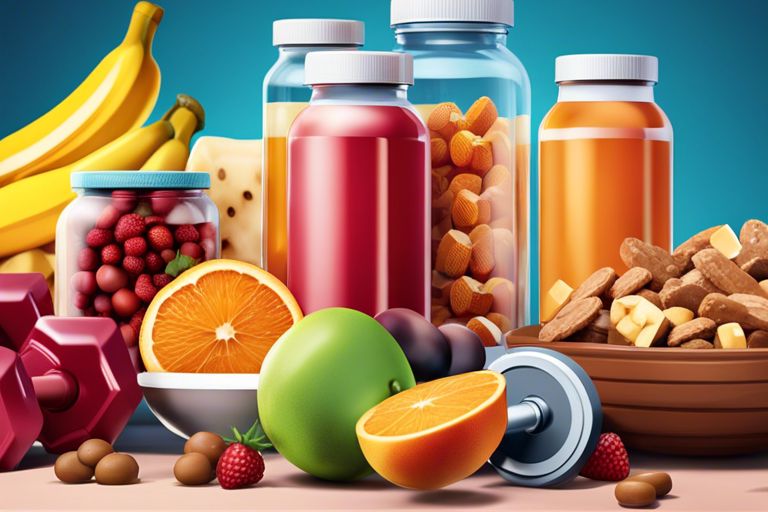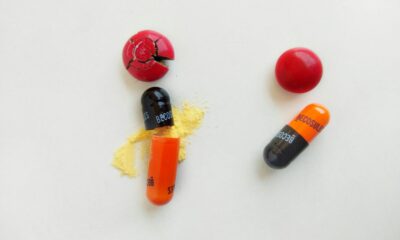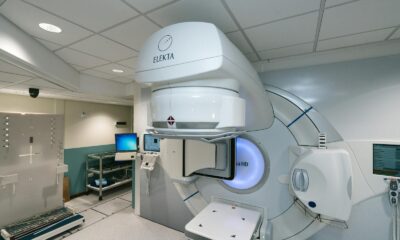Health & Society
The blind will “see”, the paralyzed will “feel” – with a chip in the brain
chip in the brain – A fundamental problem – we do not know where and how thoughts are stored in the brain
Chips in the brain will help blind people “see” and paralyzed people feel again. Technology can also make telepathy between people possible, writes Deutsche Welle. What are brain-computer interfaces?
“The future will be strange” – the prophetic words of Elon Musk were spoken by him in 2020, while explaining the possible application of brain implants developed by his neurotechnology company Neuralink.
For the past 7 years, she has been working on a computer chip that is implanted in the human brain. From there, he monitors the activity of thousands of neurons. The chip, which is thought to be a “brain-computer interface” (BCI), consists of a tiny probe containing more than 3,000 electrodes attached to flexible threads, each thinner than a human hair.
Musk’s idea is to connect the brain to computers so that information and memories can be retrieved from the depths of consciousness. As well as using this technology to treat conditions such as blindness and paralysis, the businessman has ambitions to use Neuralink to achieve telepathy between people. According to the tech mogul, this will help humanity prevail in the war with artificial intelligence. He also announced that he wanted the technology to give people “supervision”.
Science fiction or reality?
Are at least some of these bold intentions feasible? The short answer is no.
“We can’t read people’s minds. The amount of information we can decode from the brain is very limited, says Giacomo Valle, a neuroengineer at the University of Chicago in the US.
Juan Alvaro Gallego, a brain-computer interface researcher at Imperial College London, UK, agrees. “The fundamental problem is that we don’t actually know where and how thoughts are stored in the brain. We can’t read thoughts if we don’t understand the neurology behind them,” he explained to DW.
Musk first introduced the technology in 2019 using a pig with a Neuralink chip implanted in its brain and a video of a monkey mind-controlling a ping pong video game.
But the potential of the brain-computer interface goes far beyond animals playing computer games. Gallego says the technology was first developed to help paralyzed people with spinal cord injuries or those suffering from conditions like Locked-In Syndrome. With it, the patient is fully conscious, but cannot move any part of his body except the eyes. If we could turn the internal communication of these patients into a computer language, it would change a lot of things, Gallego points out.
In fact, the brain-computer interface does not record the thoughts themselves, but rather sends signals to the body to make a certain movement, for example with a finger, hand or foot, or to open the mouth in order to make a sound. The scientists also demonstrated that they can read the motor cortex’s intention to spell a given letter, Gallego says.
The paralyzed will be able to feel again
Another breakthrough was publicly displayed in 2016, when then-US President Barack Obama shook Nathan Copeland’s robotic hand. The man paralyzed after a car accident felt Obama’s handshake as if the two had touched skin to skin.
Instead of using electrodes to record from the brain and interpret planned movements, the brain is stimulated with weak currents to induce sensation, Gallego explains. A brain-computer interface was implanted in Copeland’s brain to improve the functioning of a damaged part of his nervous system. The device, made by a Neuralink competitor, was inserted into his sensory cortex and connected to sensors on the ends of his robotic arm.
“These technologies have been around for a while. “Deep brain stimulation has been used to help hundreds of thousands with Parkinson’s disease since the 1990s,” Gallego added.
Brain surgery for everyone?
So far, brain-computer interfaces are only used in special, exceptional cases, and Neuralink’s technology has only been tested on animals. All clinical applications are still at the development stage and have not entered clinical practice, explains neuroengineer Giacomo Valle.
Last year, Neuralink tried to get approval from federal regulators to test the technology on humans, but authorities rejected the request because of serious safety concerns. The company’s device consists of 96 tiny, flexible probes that are placed separately from each other in the brain.
Doubts about safety are not at all unfounded, since even if the invasive procedure is successful, the risks of infection or immune rejection of the device remain long after implantation. Musk’s company is expected to renew its request later this year.
The birth of neuroethics
Valle also points out that the brain-computer interface raises “various ethical issues.” This technology also marks the beginning of a completely new field – neuroethics. It is here that discussions begin to resemble science fiction. But in the end, the role of science fiction is just that – to prepare the world for what may appear in the future.
Health & Society
10 Healthy And Delicious Smoothie Recipes For Weight Loss

There’s no denying that incorporating nutrient-rich smoothies into your diet can be a game-changer when it comes to losing weight and improving your overall health. Whether you’re looking to shed a few extra pounds or just want to boost your daily intake of fruits and vegetables, these 10 delicious smoothie recipes are the perfect way to fuel your body with imperative nutrients and support your weight loss goals. Let’s look into these healthy and satisfying blends that will keep you energized and on track towards your wellness journey.
1. Include protein, fiber, and healthy fats for weight loss.
2. Use natural sweeteners like fruits or honey.
3. Experiment with different greens like spinach or kale.
4. Add superfoods like chia seeds or flaxseeds for nutrition.
5. Limit added sugars and high-calorie ingredients.
6. Make smoothies with low-fat dairy or plant-based milks.
Banana Berry Bliss
While you’re on a journey to lose weight, the Banana Berry Bliss smoothie can be your best companion. This delicious blend combines the sweetness of bananas with the tartness of berries to create a refreshing and satisfying drink that will keep you full and energized throughout the day.
Fresh banana and berries
If you’re looking for a quick and easy way to get your daily dose of fruits, look no further than the Banana Berry Bliss smoothie. This recipe calls for fresh bananas and berries, which are packed with imperative nutrients like fiber, vitamins, and antioxidants that will keep you feeling healthy and full of energy.
Boosts metabolism and energy
There’s more to this smoothie than just its delicious taste. The combination of bananas and berries in this recipe can help boost your metabolism and increase your energy levels, making it the perfect choice for a pre-workout snack or a mid-afternoon pick-me-up.
You can enjoy the metabolism-boosting benefits of this smoothie while satisfying your sweet cravings, making it a guilt-free treat that will help you reach your weight loss goals faster. So go ahead and blend up a Banana Berry Bliss smoothie today!
Green Goddess Delight
The 25 Best-Ever Weight Loss Smoothies offer a variety of delicious and healthy options to help you achieve your weight loss goals. Among them is the Green Goddess Delight, a refreshing and nutrient-packed smoothie that can aid in your weight loss journey.
Spinach and avocado mix
An important component of the Green Goddess Delight is the spinach and avocado mix. These ingredients are rich in vital vitamins and minerals that can help boost your energy levels and support your overall health. The combination of spinach and avocado also adds a creamy texture to the smoothie, making it satisfying and delicious.
Packed with nutrients and fiber
Spinach is packed with nutrients like vitamins A, C, and K, as well as iron and magnesium. Avocado is a great source of healthy fats and fiber, which can help keep you feeling full and satisfied for longer. By including these ingredients in your Green Goddess Delight smoothie, you are providing your body with the nutrients and fiber it needs to support your weight loss efforts.
With the Green Goddess Delight, you can enjoy a tasty and nutritious smoothie that not only helps you stay on track with your weight loss goals but also provides your body with vital nutrients and fiber. Incorporate this smoothie into your daily routine for a refreshing and satisfying way to support your overall health and wellness.
Mango Peach Perfection
Now, if you’re looking for a delicious smoothie recipe to aid in your weight loss journey, this Mango Peach Perfection is a must-try! You can find more fantastic recipes like this in the 40 Best Healthy Smoothie Recipes For Weight Loss article.
Sweet mango and peaches
Sweet mango and peaches are the stars of this refreshing smoothie. Not only do they provide a burst of tropical flavor, but they also pack a nutritional punch. Mangoes are rich in vitamins A and C, while peaches are a good source of fiber and antioxidants. This combination not only satisfies your sweet cravings but also contributes to your overall health and weight loss goals.
Hydrates and satisfies hunger
Mango Peach Perfection is not only delicious but also helps to keep you hydrated and satisfied. The high water content in both mangoes and peaches helps to keep you feeling full and prevent overeating. Additionally, the natural sugars in the fruits can help curb your sweet tooth without derailing your weight loss efforts.
The hydration from the fruits in this smoothie is important for supporting your metabolism and promoting healthy digestion. By staying hydrated, you can help flush out toxins from your body and maintain optimal functioning of your cells, which is crucial for weight loss.
Pineapple Coconut Refresher
Despite being low in calories, this pineapple coconut smoothie is packed with flavor and crucial nutrients that can help support your weight loss journey.
Tropical pineapple and coconut
If you’re looking for a smoothie that will transport you to a tropical paradise while also helping you shed those extra pounds, look no further than this pineapple coconut refresher. The combination of sweet pineapple and creamy coconut creates a delightful flavor profile that will make you feel like you’re sipping on a beach vacation in a glass.
Aids digestion and burns fat
You may not realize it, but this pineapple coconut smoothie is not only delicious but also beneficial for your digestion and weight loss goals. You see, pineapple is a rich source of an enzyme called bromelain, which can help aid digestion by breaking down proteins in your stomach. Additionally, coconut is high in medium-chain triglycerides (MCTs), a type of fat that is quickly metabolized by the body for energy, helping burn fat more efficiently.
Strawberry Spinach Surprise
All you need is a little bit of sweetness and a touch of green goodness to make this Strawberry Spinach Surprise smoothie a part of your weight loss routine. Packed with necessary nutrients and bursting with flavor, this smoothie will keep you energized and satisfied throughout the day.
Sweet strawberries and spinach
Some may find the combination of strawberries and spinach surprising, but the sweetness of the berries perfectly complements the earthy flavor of the spinach. Together, they create a harmonious blend that is not only delicious but also incredibly nutritious. The sweetness of the strawberries masks the taste of the spinach, making it an ideal way to sneak in some greens into your diet without even noticing!
Boosts antioxidants and energy
For an extra health boost, this smoothie is loaded with antioxidants from the strawberries and energy from the spinach. Antioxidants help combat free radicals in your body, which can cause damage to your cells and lead to various health issues. Spinach, on the other hand, is rich in iron and vitamin K, which can help improve your energy levels and overall well-being.
To make the most of this smoothie, be sure to use fresh strawberries and organic spinach for maximum benefits. Your body will thank you for the nutrient-rich and delicious treat!
Citrus Sunrise Sipper
For a refreshing and invigorating smoothie to kickstart your day, try the Citrus Sunrise Sipper. Packed with vitamin C and bursting with tangy flavors, this smoothie is a perfect way to boost your metabolism and aid in weight loss.
Orange, lemon, and lime mix
Lemon, orange, and lime come together in this delightful blend to create a zesty and citrusy explosion of flavors. These fruits are not only rich in antioxidants to help fight off free radicals in your body, but they also provide a good dose of fiber to keep you feeling full and satisfied.
Uplifts mood and metabolism
Even beyond the delicious taste, the Citrus Sunrise Sipper can work wonders for your mood and metabolism. The citrus fruits in this smoothie are known to have a mood-enhancing effect, helping you feel more positive and energized throughout the day. Additionally, the vitamin C content can help boost your metabolism, aiding in weight loss efforts.
Citrus fruits are also beneficial for digestion and can help regulate blood sugar levels, making them an excellent choice for anyone looking to improve their overall health and well-being.
Kiwi Avocado Dream
Keep your weight loss journey on track with this delicious and nutritious Kiwi Avocado Dream smoothie. With the perfect balance of sweetness from kiwi and creaminess from avocado, this smoothie is sure to become your new favorite.
Creamy kiwi and avocado blend
Clearly, the combination of kiwi and avocado creates a creamy and satisfying texture that will keep you full and energized throughout the day. The rich flavor profile of this smoothie makes it a great choice for breakfast or as a post-workout snack.
Supports healthy weight loss
Weight loss may seem daunting, but with the help of the Kiwi Avocado Dream smoothie, you can boost your metabolism and support your body’s natural fat-burning processes. The fiber from the kiwi and healthy fats from the avocado will keep you feeling satisfied and prevent unnecessary snacking.
To fully maximize the weight loss benefits of this smoothie, be sure to pair it with a balanced diet and regular exercise routine. The nutrient-dense ingredients in this smoothie will help fuel your workouts and contribute to your overall health and well-being.
Cucumber Lime Refresher
To enjoy a refreshing drink that helps with weight loss, try the Cucumber Lime Refresher smoothie. This vibrant and zesty smoothie is a perfect treat to cool down and revitalize your body.
Refreshing cucumber and lime
Cucumber is a hydrating ingredient that is low in calories but high in water content. This makes it an excellent choice for promoting hydration and aiding weight loss. Paired with the zingy flavor of lime, this smoothie is a refreshing blend that will leave you feeling invigorated.
Hydrates and reduces bloating
Even though cucumber is made up of mostly water, it also contains phytonutrients that help reduce
bloating and inflammation in the body. This means that not only does it keep you hydrated, but it also works to reduce any uncomfortable bloating you may be experiencing.
Additionally, the high water content in cucumber helps to flush out toxins from your system, further supporting your weight loss goals. By incorporating this Cucumber Lime Refresher smoothie into your routine, you can stay hydrated and reduce bloating while enjoying a delicious and nutritious treat.
Berry Blissful Boost
Many smoothie enthusiasts love the refreshing taste of a Berry Blissful Boost smoothie. Packed with antioxidants and vitamins, this delicious blend is not only satisfying but also great for your overall health.
Antioxidant-rich berry mix
An antioxidant-rich berry mix includes strawberries, blueberries, and raspberries. These berries are high in vitamins C and K, as well as antioxidants like anthocyanins, which can help protect your cells from damage caused by free radicals. By incorporating these berries into your smoothie, you are giving your body a powerful boost of nutrients that can help support your immune system and overall well-being.
Supports healthy weight loss
You can also enjoy a Berry Blissful Boost smoothie as a part of your weight loss journey. With the right combination of ingredients, this smoothie can be a low-calorie and filling meal replacement option. By including ingredients like spinach and chia seeds, you can create a smoothie that is not only delicious but also supports your weight loss goals.
You can also add a scoop of protein powder to your Berry Blissful Boost smoothie to create a more satiating meal that can help keep you full for longer. Protein is necessary for building and repairing tissues, and it can also boost your metabolism and support muscle growth while you are working towards your weight loss goals.
Summing up
Presently, you have learned about 10 healthy and delicious smoothie recipes that can support you in your weight loss journey. These smoothies are not only nutritious and packed with vitamins, minerals, and antioxidants, but they are also satisfying and can help you stay full for longer periods of time. Incorporating these smoothies into your daily routine can help you manage your weight more effectively while enjoying tasty and nourishing options.
For even more fat-burning smoothie recipes to support your weight loss goals, check out these 10 Best Fat-Burning Smoothies for Weight Loss ⚡️. Including these smoothies in your diet can be a delicious and easy way to enhance your wellness journey and achieve your desired results.
Health & Society
The Ultimate Guide To Pre And Post-Workout Nutrition

Nutrition is key to fueling your body for optimal performance and recovery during your workouts. What you eat before and after exercise can make a significant difference in your energy levels, muscle recovery, and overall results. In this comprehensive guide, you will learn the important nutrition tips to maximize your pre and post-workout meals, helping you achieve your fitness goals effectively.
1. Pre-workout: Eat carbs and protein 1-2 hours before.
2. Stay hydrated by drinking water before and after your workout.
3. Avoid heavy, high-fat meals that can slow digestion.
4. During workout, consider a sports drink for hydration and energy.
5. Post-workout: Refuel with protein for muscle repair and growth.
6. Include carbs to replenish glycogen stores for energy recovery.
Understanding the Importance of Pre-Workout Nutrition
While you may focus on what you eat after a workout, what you consume before your exercise routine is just as crucial. Pre-workout nutrition plays a vital role in providing you with the energy and nutrients needed to perform at your best during your workout session. It helps to fuel your muscles and optimize your performance while also aiding in muscle recovery post-exercise.
Factors Affecting Pre-Workout Nutrition
Even before you decide on what to eat before a workout, there are various factors you need to consider that can influence your pre-workout nutrition choices. These factors include your fitness goals, the intensity and duration of your workout, any dietary restrictions, and your personal preferences.
- Timing: When and how soon you eat before a workout
- Macronutrient balance: The ratio of carbs, protein, and fat in your pre-workout meal
- Food choices: Selecting the right type of foods that are easily digestible and provide sustained energy
- Hydration: Ensuring you are well-hydrated before starting your workout
After addressing these factors, you can tailor your pre-workout nutrition to suit your individual needs and optimize your performance.
Pros and Cons of Different Pre-Workout Meal Timings
| Meal Timing | Pros and Cons |
| 1-2 hours before | Pro: Provides sustained energy throughout the workout Con: May not be suitable for early morning workouts |
| 30 minutes before | Pro: Quick energy boost Con: May lead to indigestion or discomfort during the workout |
| Intermittent fasting | Pro: Can promote fat loss Con: May result in decreased performance for some individuals |
Pre-workout nutrition meal timings can significantly impact your exercise performance. Choose the timing that works best for you based on your schedule, preferences, and how your body responds to the meal.
Types of Pre-Workout Nutrition
One of the crucial aspects of your workout routine is your pre-workout nutrition. The right macronutrient-rich foods, meal replacement shakes and supplements, and snacks and beverages can make a significant difference in your performance at the gym.
Macronutrient-Rich Foods
Little adjustments in your pre-workout nutrition can lead to big improvements in your training sessions. Protein-rich foods like chicken, eggs, and Greek yogurt can help build and repair muscle tissue. Carbohydrate-rich foods such as fruits, oats, and sweet potatoes provide the necessary energy for your workouts. Healthy fats from sources like nuts and avocados can help sustain your energy levels throughout your session.
| Protein | Chicken, Eggs, Greek Yogurt |
| Carbohydrates | Fruits, Oats, Sweet Potatoes |
| Healthy Fats | Nuts, Avocados |
Meal Replacement Shakes and Supplements
Replacement options like meal replacement shakes and protein bars can be convenient and effective sources of nutrition before your workout. These products are designed to provide a balance of macronutrients tailored to support your exercise performance and recovery.
This comprehensive approach ensures you get the imperative nutrients your body needs to enhance your workout results. Remember to choose products that are low in added sugars and artificial ingredients for optimal performance.
Snacks and Beverages for Optimal Energy
Foods rich in fast-digesting carbohydrates like bananas and granola bars can give you a quick energy boost before your workout. Hydration is also crucial, so be sure to include water, coconut water, or sports drinks in your pre-workout routine to stay hydrated and energized.
PreWorkout, focusing on whole foods and natural sources of energy will provide you with a sustained release of nutrients during your training session, helping you perform at your best.
The Ultimate Guide To Pre And Post-Workout Nutrition: Step-by-Step Guide to Pre-Workout Meal Planning
To ensure you are fueling your body properly before a workout, it’s important to plan your pre-workout meals carefully. Below is a step-by-step guide to help you create the perfect pre-workout meal plan tailored to your fitness goals and needs.
Calculating Your Caloric Needs
| If you are looking to optimize your performance during a workout, it’s crucial to determine your caloric needs based on your activity level and fitness goals. | Caloric Needs Calculator – Use an online calculator to estimate how many calories you need per day based on your age, weight, height, and activity level. This will give you a starting point for planning your pre-workout meals. |
Choosing the Right Foods for Your Workout Type
| PreWorkout you engage in strength training, focusing on protein-rich foods like chicken, eggs, or Greek yogurt can help support muscle growth and repair. | Cardio Workouts – Opt for complex carbohydrates like oats, sweet potatoes, or whole grains to provide long-lasting energy for your cardio sessions. |
StepbyStep understanding your workout type will help you select the right foods that can enhance your performance and help you achieve your fitness goals more effectively.
Sample Meal Plans for Different Fitness Goals
There’s no one-size-fits-all approach to pre-workout nutrition, as it varies depending on your fitness goals. Whether you aim to build muscle, increase endurance, or lose weight, there are specific meal plans to support each goal.
Meal prepping can be a game-changer in ensuring you have the right nutrients at the right time to fuel your workouts and optimize your performance. By following these sample meal plans tailored to your fitness goals, you can take your workouts to the next level and see results faster.
Tips for Optimizing Pre-Workout Digestion
For optimal performance during your workouts, it’s crucial to pay attention to your pre-workout nutrition and how it affects your digestion. Here are some tips to help you optimize your pre-workout digestion:
- Aim to eat a balanced meal 1-2 hours before your workout, focusing on complex carbohydrates, lean proteins, and healthy fats to provide sustained energy.
- Avoid foods high in saturated fats and simple sugars right before your workout, as they can lead to digestive discomfort and sluggishness.
- Stay hydrated by drinking water before and during your workout to aid in digestion and help regulate your body temperature.
Any discomfort during your workout can greatly impact your performance, so paying attention to your pre-workout digestion is crucial for a successful exercise session.
Managing Food Intolerances and Sensitivities
Clearly, if you have known food intolerances or sensitivities, it’s important to avoid those foods before your workout to prevent digestive issues. Pay attention to how your body reacts to certain foods and adjust your pre-workout meals accordingly. Additionally, consider incorporating digestive enzymes or probiotic supplements to aid in digestion and reduce any discomfort.
Strategies for Reducing Bloating and Discomfort
To optimize your pre-workout digestion and minimize bloating and discomfort, try eating smaller meals closer to your workout time. Additionally, focus on easily digestible foods such as smoothies or rice cakes with nut butter. Avoid foods high in fiber or artificial sweeteners that can cause gastrointestinal distress.
Optimizing your pre-workout digestion is crucial for fueling your body properly and enhancing your performance during exercise. By following these tips and paying attention to how your body responds, you can ensure a comfortable and energized workout session.
The Role of Probiotics in Gut Health
To support your gut health and improve digestion, consider incorporating probiotic-rich foods such as yogurt, kefir, and sauerkraut into your diet. Probiotics help maintain a healthy balance of gut bacteria, which is crucial for optimal digestion and nutrient absorption. Plus, they can help reduce bloating, gas, and other digestive issues.
Plus, if you are looking to supplement with probiotics, choose a high-quality product that contains a variety of strains and a high CFU count to maximize the benefits for your digestive system.
Post-Workout Nutrition: Why It Matters
After an intense workout, taking care of your body is crucial for maximizing your efforts in the gym. **Post-workout nutrition** plays a significant role in helping your muscles recover, replenishing energy stores, and ensuring optimal results from your training sessions. If you’re looking for a comprehensive guide on pre and post-workout nutrition, check out The Ultimate Guide to Pre- and Post-Workout Nutrition for more in-depth information.
The Anabolic Window: Separating Fact from Fiction
Window **The idea of an “anabolic window” immediately after your workout when you must consume protein or carbohydrates within a specific timeframe to maximize muscle growth has been debated in recent years. While it is true that getting nutrients into your body after a workout can be beneficial, the concept of a narrow window is not as critical as once thought. **Your body is constantly repairing and rebuilding muscle tissue, so as long as you’re consuming **nutrient-dense foods** throughout the day, you will still see improvements in your muscle recovery and growth. The key is to focus on **consistency** in your nutrition rather than stressing about consuming nutrients within a precise time frame.
The Importance of Refueling for Muscle Recovery
Even **after your workout, your muscles are depleted of glycogen and need proper nutrition to kickstart the recovery process. **Refueling with a combination of **protein and carbohydrates** is vital to repair muscle tissue, replenish energy stores, and help your body bounce back stronger for your next training session. **Post-workout nutrition is your opportunity to provide your body with the necessary building blocks to repair and grow muscle, ultimately improving your performance and results in the long run.
Nutrition plays a crucial role in helping you achieve your fitness goals. By **prioritizing post-workout nutrition**, you can enhance your recovery, boost muscle growth, and improve your overall performance in the gym. Remember to focus on **whole, nutrient-dense foods** to give your body the fuel it needs to thrive. **Consistency is key**, so make sure to **refuel after every workout** to optimize your results and progress towards your fitness ambitions.
Types of Post-Workout Nutrition
Many different types of post-workout nutrition can help you recover and refuel after a challenging workout. It’s important to give your body the right nutrients to optimize recovery and performance. Here are some key types of post-workout nutrition to consider:
- Protein-Rich Foods and Supplements
- Carbohydrate-Rich Foods for Glycogen Replenishment
- Healthy Fats for Hormone Regulation and Inflammation Reduction
- Supplements for Enhanced Recovery
- Hydration for Replenishing Fluids
| Protein-Rich Foods and Supplements | Carbohydrate-Rich Foods for Glycogen Replenishment |
| Chicken breast | Sweet potatoes |
| Salmon | Quinoa |
| Whey protein powder | Whole grain bread |
| Greek yogurt | Bananas |
| Beans | Berries |
Protein-Rich Foods and Supplements
Protein-rich foods and supplements are important for muscle repair and growth after your workout. Consuming protein post-exercise helps stimulate muscle protein synthesis and aids in recovery. Foods like chicken breast, salmon, and Greek yogurt are excellent sources of protein. If you’re looking for a convenient option, whey protein powder can be easily added to your post-workout smoothie or shake.
Carbohydrate-Rich Foods for Glycogen Replenishment
Carbohydrates are crucial for replenishing glycogen stores in your muscles after a workout. Consuming carbohydrates post-exercise helps restore energy levels and promote recovery. Foods like sweet potatoes, quinoa, and whole grain bread are good sources of carbohydrates. Including fruits like bananas and berries in your post-workout meal can also provide a quick source of energy.
The consumption of carbohydrates post-workout is important to replenish glycogen stores that were depleted during your exercise session. Carbohydrates help restore energy levels, so you can recover faster and be ready for your next workout. Including a mix of complex carbohydrates like whole grains and simple sugars from fruits can provide the right balance for replenishing glycogen effectively.
Healthy Fats for Hormone Regulation and Inflammation Reduction
Healthy fats play a crucial role in hormone regulation and reducing inflammation in your body post-exercise. Including sources of healthy fats like avocado, nuts, and olive oil in your post-workout meal can help support hormone production and reduce exercise-induced inflammation. These fats are important for overall health and can aid in your recovery process.
The consumption of healthy fats post-workout is important for hormone balance and reducing inflammation, which can help optimize your recovery and performance. Including a variety of healthy fats in your post-workout nutrition plan can provide important nutrients and support your overall well-being.
Supplements
Supplements can be a valuable addition to your post-workout nutrition regimen, providing targeted support for enhanced recovery. Options like protein powders, branched-chain amino acids (BCAAs), and creatine can help support muscle repair, reduce muscle soreness, and improve performance. While supplements can be beneficial, it’s important to choose high-quality products and consult with a healthcare provider or nutritionist to ensure they are suitable for your needs.
Factors Influencing Post-Workout Nutrition Needs
Keep in mind that your post-workout nutrition needs can vary based on several factors. Understanding these factors can help you optimize your recovery and performance. Here are some key considerations:
- Workout Intensity and Duration: Some workouts may be more demanding than others, requiring different levels of nutrient replenishment. For example, a high-intensity workout like sprinting may deplete your glycogen stores more rapidly than a moderate-intensity weightlifting session.
- Individual Nutrient Requirements and Deficiencies: Post-workout nutrition needs can also be influenced by your unique nutrient requirements and any deficiencies you may have. Addressing specific nutrient needs in your post-workout meals can support recovery and help prevent further deficiencies.
Workout Intensity and Duration
Some workouts place a higher demand on your body and deplete your energy stores more quickly. If you engage in high-intensity or long-duration activities, your post-workout nutrition should focus on replenishing glycogen stores and supporting muscle recovery. The timing and composition of your post-workout meal or snack can impact how well you recover and adapt to your training.
Individual Nutrient Requirements and Deficiencies
PostWorkout nutrition needs can be influenced by your unique nutrient requirements and any deficiencies you may have. For example, if you are deficient in vitamin D, incorporating foods rich in this nutrient post-exercise can help support your overall health and recovery. Identifying and addressing individual nutrient needs can optimize your post-workout nutrition strategy.
Age, Sex, and Body Composition
If you are younger or older, male or female, your post-workout nutrition needs may vary. Age-related factors such as metabolism and hormone levels can impact how your body responds to exercise and nutrient intake. Plus, differences in body composition, such as muscle mass and fat percentage, can influence your nutrient requirements for optimal recovery and performance.
Step-by-Step Guide to Post-Workout Meal Planning
Now, let’s probe the step-by-step process of planning your post-workout meals to maximize recovery and results. Here, we will discuss creating a balanced meal for optimal recovery, sample meal plans for different fitness goals, and timing and frequency of post-workout meals.
Creating a Balanced Meal for Optimal Recovery
Optimal recovery after a workout is crucial for muscle growth and replenishing energy stores. When planning your post-workout meal, aim to include a combination of protein and carbohydrates. Protein helps repair and build muscle, while carbohydrates replenish glycogen stores and provide energy. Additionally, adding some healthy fats can aid in nutrient absorption and support overall health.
Incorporate foods like lean meats, poultry, fish, eggs, quinoa, sweet potatoes, fruits, and vegetables into your post-workout meal. A balanced meal that includes these components will help optimize your recovery and provide the necessary nutrients for your body to repair and grow.
Sample Meal Plans for Different Fitness Goals
An effective post-workout meal plan will vary depending on your fitness goals. If you are looking to build muscle, consider a meal that combines protein and carbohydrates in a 2:1 ratio. For fat loss, focus on lean protein sources and incorporate more vegetables into your meal to keep you full and satisfied. If your goal is endurance training, include complex carbohydrates and a moderate amount of protein to replenish energy stores.
Meal planning for your specific fitness goals is necessary to support your body’s needs and help you reach your desired outcomes. Tailoring your post-workout meals to your goals will ensure that you are fueling your body effectively for optimal performance and results.
Timing and Frequency of Post-Workout Meals
There’s a common belief that you need to consume protein immediately after your workout to maximize recovery. While PostWorkout nutrition is important, the timing of your post-workout meal is not as critical as once believed. As long as you consume a balanced meal containing protein and carbohydrates within a few hours after your workout, you can still effectively support recovery and muscle growth. Remember to listen to your body and eat when you are hungry to fuel your recovery properly.
Tips for Optimizing Post-Workout Recovery
Not paying attention to your post-workout recovery can hinder your progress and leave you feeling sore and fatigued. To ensure your body recovers effectively after a workout, it’s crucial to focus on proper nutrition, hydration, and rest.
- Strategies for Reducing Muscle Soreness and Inflammation
Strategies for Reducing Muscle Soreness and Inflammation
One of the key strategies for reducing muscle soreness and inflammation after a workout is to incorporate stretching and foam rolling into your cool-down routine. This can help increase blood flow and reduce muscle tension, promoting faster recovery. Additionally, adding foods rich in anti-inflammatory properties like turmeric and omega-3 fatty acids can also help alleviate soreness.
Assume that incorporating these strategies into your post-workout routine can help minimize muscle soreness and enhance your overall recovery process.
- The Role of Antioxidants and Anti-Inflammatory Compounds
The Role of Antioxidants and Anti-Inflammatory Compounds
Compounds found in antioxidant-rich foods such as berries, dark leafy greens, and nuts can help combat oxidative stress in the body and reduce inflammation caused by intense exercise. Including these nutrient-dense foods in your post-workout meals can support your body’s repair and recovery process.
Reducing inflammation post-workout can boost your immune system and promote better overall performance in your next training session.
- Importance of Hydration and Electrolyte Balance
Importance of Hydration and Electrolyte Balance
Hydration plays a crucial role in maintaining your body’s temperature and helping with the transport of nutrients to your cells. Electrolytes, such as sodium and potassium, are crucial for muscle function and proper hydration. Ensuring you replenish both fluids and electrolytes post-workout is crucial for efficient recovery and performance.
Tips: Keep a reusable water bottle with you throughout the day to ensure you’re staying hydrated and consuming enough fluids to support your recovery.

Common Mistakes to Avoid in Pre- and Post-Workout Nutrition
Over- or Under-Eating Before a Workout
Unlike what you might think, more isn’t always better when it comes to pre-workout nutrition. **Overeating** before a workout can leave you feeling sluggish and bloated, making it harder to perform at your best. On the other hand, **under-eating** can leave you feeling weak and fatigued, with not enough energy to power through your session.
Neglecting Proper Hydration and Electrolyte Balance
Even with the best pre- and post-workout nutrition plan, if you neglect proper **hydration** and **electrolyte balance**, you’re setting yourself up for subpar performance and recovery. **Dehydration** can lead to decreased strength, endurance, and overall workout performance. Furthermore, an imbalance in electrolytes like sodium and potassium can cause muscle cramps, fatigue, and even dizziness during your session.
Common signs of dehydration include dark urine, dry mouth, and feeling thirsty. It’s important to drink enough water throughout the day and especially before, during, and after your workout to ensure optimal performance and recovery.
Failing to Adjust Nutrition Plans Based on Progress
Based on your progress in the gym, it’s crucial to **adjust** your **nutrition** plan accordingly. **Failing to do so** can hinder your performance and results. For example, if you’re consistently feeling fatigued during workouts or not seeing improvements in strength or muscle growth, it may be a sign that you need to tweak your pre- and post-workout nutrition strategy.
For instance, if you’re looking to build muscle but not seeing progress, you may need to increase your **protein** intake to support muscle repair and growth. On the other hand, if you’re feeling sluggish during workouts, adding more **carbohydrates** before your session could provide the energy boost you need.
Special Considerations for Specific Diets and Restrictions
Once again, if you are following a specific diet or have dietary restrictions, it’s vital to tailor your pre and post-workout nutrition accordingly. For a comprehensive guide on how to optimize your nutrition around your workouts, check out A Guide to Pre- and Post-Workout Nutrition.
Vegetarian and Vegan Pre- and Post-Workout Nutrition
Vegan: If you follow a vegan diet, you can still meet your pre and post-workout nutrition needs by incorporating plant-based sources of protein, such as beans, lentils, tofu, tempeh, and quinoa. Supplementing with pea protein or rice protein powders can also help you reach your protein goals. For carbohydrates, focus on fruits, vegetables, whole grains, and legumes. Don’t forget healthy fats from sources like nuts, seeds, avocados, and plant-based oils to support overall health and recovery.
Gluten-Free and Low-FODMAP Options
You: If you are gluten-free or following a low-FODMAP diet, there are plenty of options to fuel your workouts effectively. Opt for gluten-free grains like rice, quinoa, and oats, and be mindful of low-FODMAP fruits and vegetables such as bananas, blueberries, carrots, and spinach. Additionally, sources of protein like chicken, turkey, eggs, and lactose-free dairy can support muscle recovery without triggering digestive issues.
LowFODMAP: The Low-FODMAP diet focuses on reducing fermentable carbohydrates that can exacerbate digestive symptoms. By choosing low-FODMAP options like lactose-free dairy, certain fruits and vegetables, and gluten-free grains, you can support your workout performance while minimizing discomfort. Experiment with different foods to find what works best for your body and consult with a registered dietitian for personalized guidance.
Nutrition Planning for Athletes with Food Allergies
The: If you have food allergies, careful nutrition planning is crucial to ensure you meet your dietary needs while avoiding potential allergens. Planning your meals and snacks ahead of time can help you stay on track and prevent accidental exposure to allergens. Always read labels carefully, communicate your allergies to food establishments, and consider working with a healthcare provider or dietitian to create a safe and effective nutrition plan tailored to your specific allergies.
Supplements and Ergogenic Aids: Do They Really Work?
Your quest for the best pre and post-workout nutrition may lead you to consider the use of various supplements and ergogenic aids. But do they really work? Let’s explore some common options and their effectiveness in enhancing your performance and recovery.
Protein Powders and Creatine Supplements
Really, protein powders and creatine supplements are popular choices among athletes and fitness enthusiasts looking to boost muscle growth and strength. Protein powders can be a convenient way to increase your protein intake, aiding in muscle repair and recovery. Creatine supplements may improve your high-intensity exercise performance and promote lean muscle mass gains. When used correctly and in combination with a balanced diet, these supplements can be beneficial additions to your workout routine.
Beta-Alanine and Branched-Chain Amino Acids (BCAAs)
Little is known about beta-alanine and BCAAs. **Beta-alanine** is believed to enhance muscular endurance by increasing carnosine levels in your muscles. **BCAAs**, consisting of leucine, isoleucine, and valine, are crucial for muscle protein synthesis and reducing muscle fatigue during exercise. Incorporating these supplements into your pre and post-workout nutrition strategy may help improve your overall performance and recovery.
Ergogenic aids, such as beta-alanine and BCAAs, have been shown to have positive effects on athletic performance and muscle recovery. Beta-alanine can increase exercise capacity and performance during high-intensity activities, while BCAAs are crucial for muscle growth and repair. Including these supplements in your regimen may give you an added edge in achieving your fitness goals.
The Science Behind Popular Pre- and Post-Workout Supplements
Amino acid supplements, such as beta-alanine and BCAAs, have garnered attention for their potential to enhance exercise performance and recovery. **It** is important to note that individual responses to these supplements may vary, and it’s crucial to consult with a healthcare professional before incorporating them into your routine. By understanding the science behind these popular pre and post-workout supplements, you can make informed choices to optimize your training outcomes.
Putting it All Together: Creating a Personalized Nutrition Plan
Despite the abundance of information available on pre and post-workout nutrition, creating a personalized plan can still be challenging. To make the process easier, consider the following steps to tailor your nutrition to your workout needs.
Assessing Your Current Diet and Nutrition Habits
Putting together a personalized nutrition plan starts with assessing your current diet and nutrition habits. Take some time to reflect on what you are currently eating before and after your workouts. Are you fueling your body adequately for exercise? Are you eating the right balance of nutrients for recovery?
Setting Realistic Goals and Tracking Progress
An important aspect of creating a personalized nutrition plan is setting realistic goals and tracking your progress. By setting specific, measurable goals, you can better monitor your progress and make adjustments as needed. Whether your goal is to improve performance, build muscle, or lose weight, having a clear target can help keep you motivated and on track.
Additionally, tracking your progress allows you to see what is working well and what may need adjustment in your nutrition plan. Keep a food and workout journal to record your meals, snacks, exercise routines, and how you feel during and after workouts. This information can help you identify patterns and make informed decisions about your nutrition and fitness goals.
Adjusting Your Plan Based on Feedback and Results
Results from tracking your progress will provide valuable feedback on the effectiveness of your nutrition plan. If you are not seeing the results you desire, it may be time to adjust your plan. This could involve changing your macronutrient ratios, meal timing, or types of foods you consume. Keep in mind, everyone’s body is different, so what works for one person may not work for another.
By staying flexible and open to making changes based on feedback and results, you can continually optimize your nutrition plan to support your fitness goals. Don’t be afraid to experiment and try new approaches until you find what works best for you.
Conclusion
Drawing together the key points of ‘The Ultimate Guide To Pre And Post-Workout Nutrition’, you now have a comprehensive understanding of how to fuel your body properly before and after exercise. By following the tips and suggestions outlined in this guide, you can optimize your performance, enhance your recovery, and achieve your fitness goals more effectively. For further in-depth information, you can refer to The Complete Pre and Post-Workout Nutrition Guide.
Health & Society
The benefits of bee-polen – the food that gives us everything we need

The pollen originates from those parts of the plant that are particularly important for the development of the plant species. Therefore, it contains substances of high biological value. Its composition varies greatly depending on the plants from which it is harvested. Fresh pollen contains the following ingredients:
• protein substances (22-40%), including the amino acids valine, tryptophan, phenylalanine, lysine, methionine, leucine, isoleucine, trevonine, histidine, arginine, glutamic, aspartic acid, etc.
• Sugars in the form of nectar carbohydrates (30 – 60 %)
• Vitamins. Bee pollen is particularly rich in vitamins that are absorbed by the bees’ body. Vitamins B1, B2, B3, B6, B7, B8, B9, B12, C, provitamin A (converted in the body into vitamin A), vitamin D, etc. have been identified. Rutin (vitamin P) reaches 60 mg per 100 g of pollen. It is of particular importance for the human body, as it increases capillary resistance
• Enzymes. Amylase, invertase, catalase, phosphatase, etc., which catalyze various chemical processes in the body, have been identified.
• Antibiotic substances. They come from both plants and bees. They stop the development of bacteria in the intestines. They are especially active against gram-negative bacteria, such as Escherichia coli, Salmonella ehteritidis and Proteus vulgaris, which are the causes of gastrointestinal diseases and urinary tract infections.
• Mineral substances. Potassium, calcium, phosphorus and magnesium are in the greatest amount. Manganese, zinc, cobalt, barium, silver, gold, vanadium, tungsten, iridium, mercury, molybdenum, chromium, cadmium, strontium, palladium, platinum and titanium have been found in small quantities. The amount of mineral salts is greater in pollen than in honey.
• Lipids, aromatic and pigment substances.
• Biologically active substances. Bee pollen contains from 0.60 to 4.87% nucleic acids, ribonucleic acids being more than deoxyribonucleic acids.
• Bee pollen is rich in the essential amino acids for life, which many times surpass the amino acids contained in beef, eggs and cheese.
If there were no other food sources containing amino acids, pollen could provide the human body with the minimum need for them through the average dose of 15 g per day. For example, 2 tablespoons of pollen equals the protein content of 140 g of pork steak, but without bad fats, chemicals and animal hormones.
Therapeutic action and application:
On the one hand, pollen has a high nutritional value – no other natural product can compete with it, but at the same time it is also a complete food thanks to its diverse ingredients. Pollen should also be considered as a natural “medicine-concentrate”, based on the large amount of enzymes, vitamins, antibiotic substances, trace elements, flavonoids, etc. contained in it – all of natural origin and in a favorable ratio with each other.
Pollen is used in the treatment of:
• Diseases of the small and large intestine.
• Possibility of using the pollen and perga in the treatment of diabetes, as it stimulates the release of insulin.
• Lowers the level of cholesterol, which is used in the treatment of atherosclerosis.
• Pollen is characterized by a low sodium content, but contains a lot of magnesium and potassium, which makes it suitable for the treatment of cardiovascular diseases.
• Pollen contains iron, which means that it can be used in the treatment of anemia.
• Thanks to the rich content of iodine, the pollen can be used in the prevention of endemic goitre.
• The pollen has a well-expressed anabolic (building) effect.
• It is used in the treatment of inflammatory and degenerative diseases of the liver.
• It has a normalizing effect on the nervous system.
Very good results are known in the treatment and prevention of pathological processes of the prostate gland such as hypertrophy. Bee pollen is used for gastrointestinal diseases, asthenia and states of mental and physical fatigue, which appeared as a result of various diseases, overloads, exhaustion (age-related and neurotic), etc. It is used for lack of appetite in children, delayed growth and delayed teething; it is included in the complex therapy of cardiovascular diseases, in the prevention and treatment of atherosclerosis, in liver diseases, climacteric disorders, etc.
Contraindications for treatment with bee pollen are allergy to it and severe damage to the renal parenchyma.
Pollen is considered to be completely harmless to the body.
It is suitable for treating liver diseases, atherosclerosis, lipidemia (increase in fat). With long-term treatment, it improves the condition of patients with prostate adenoma and prostatitis, depressive conditions and chronic alcoholism. An effective means of general strengthening of the organism.
Store in a dark and cool place.
Admission-
In the evening before going to bed, take a glass of water with one teaspoon of bee pollen and one teaspoon of honey, after it has dissolved and obtained a yellowish homogeneous mixture. Therefore, it is good to add the ingredients – pollen and honey – to a glass of warm water at least 15-20 minutes earlier. The spoon should not be metal.
Why evening?
Because of the whole range of vitamin B. It has a calming effect on the nervous system. It helps to sleep well.
Vitamins. Bee pollen is particularly rich in vitamins that are absorbed by the bees’ body. Vitamins B1, B2, B3, B6, B7, B8, B9.
Illustrative photo: St. Great martyr Procopius († 303) – patron saint of beekeepers celebrated on July 8 by the Orthodox Church. Fresco from 1315-1320 in the Hora church in Constantinople (Constantinople).
-

 Sports5 days ago
Sports5 days agoBari still knocked out and last, Modena gets unblocked
-

 Sports6 days ago
Sports6 days agoFiorentina bungles: 3-3 mockery and qualification in the balance
-

 Sports5 days ago
Sports5 days agoMax Verstappen worried, Lewis Hamilton laughs it off
-

 Health & Society5 days ago
Health & Society5 days agoReligious fundamentalism as psychosis
-

 Politics4 days ago
Politics4 days agoElias Castillo: A Stalwart of Latin American Legislative Leadership
-

 Sports6 days ago
Sports6 days agoFiorentina, Palladino: “Inexplicable departure.”
-

 Sports4 days ago
Sports4 days agoInter on autopilot, everything easy with Lecce
-

 Health & Society3 days ago
Health & Society3 days agoThe intoxicated society





















